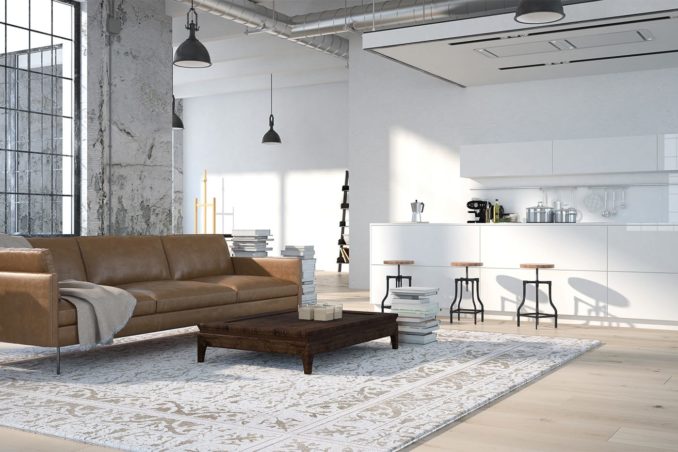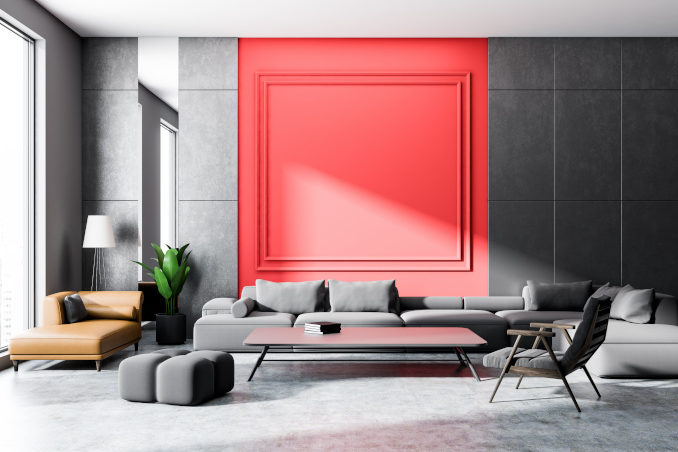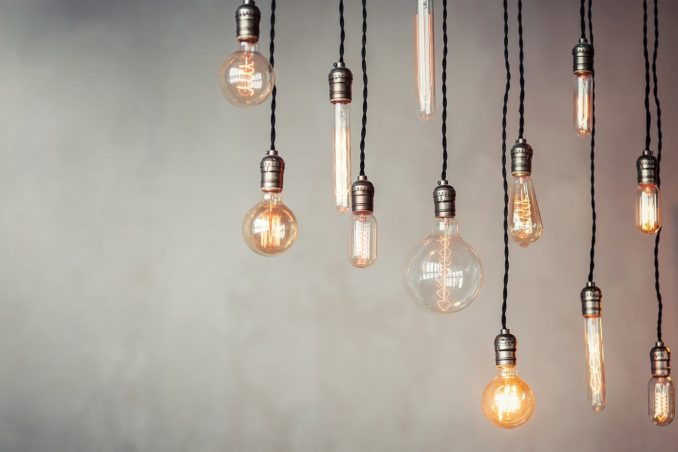
The Role of Lighting in Interior Design
Lighting forms and guides the way that we use a room. In this way, I plan lighting elements with real life in mind. How the personalities of my clients fit with certain lighting styles, for example. Some people benefit mentally from good levels of illumination in their home. Similarly, some clients are more inclined to hold social events than others. So, we should understand a bit more about the psychology of lighting.
Lighting for Mood and Atmosphere:
We can build atmospheric lighting using elements of tone and hue. Practical lighting that supports natural light promotes an active and busy daytime function in the kitchen or study. Then when evening comes, bring in different layers of lighting in the living room or dining room to create any mood from cosy and quiet to social and vibrant. A more calming lighting scheme helps us to wind down in the evening. This is especially important in bedrooms where the right lighting can support your natural circadian rhythm and sleep patterns.
How Lighting Affects Behaviour:
Designers put a lot of focus on maximising the natural light that disperses around a living space. This is because natural light has an uplifting power on our mood and increases our energy levels. So it is important to give a room a variety of lighting options that can support natural light during the day. Lighting should work alongside the choices of colour within a design concept to heighten the impact of those choices. This may be via a coloured glass light shade, or a wall light that emphasises your choice of wall colour.
How Lighting Enhances Spaces:
By including different layers and tones of light, you will create depth within a room. A space will not automatically feel larger because of being brightly illuminated – in fact this will just make the room appear flat and institutional. Textured lighting supports that feeling of luxury in a space as it is gentle for your eye to absorb.

Types of Interior Lighting
We can distinguish interior lighting into specific categories. This helps to create a plan of lighting functions that will complement the rest of a room concept.
Ambient Lighting:
This is the overall lighting state for your room. It is the base on which we can add additional elements to create mood and texture. Some functional rooms like a utility room for example may only require ambient lighting. However for others, like a living room or bedroom, ambient lighting is just the first layer.
Task Lighting:
As suggested by the name, task lighting is there to help us to accomplish tasks. For example, a desk lamp in the study or under cabinet LEDs in the kitchen. This is why it is so important for me to get to know my clients. I can then ensure that my lighting design complements their hobbies, working lives and daily tasks.
Accent Lighting:
This level of lighting draws the eye to certain features in a room. The brightness of illumination should be greater than the ambient lighting to create visual interest. Recessed lights, down lights and spotlights all work to create focus. This may be towards a sculpture, artwork, area of greenery, or library for example.
Layered Lighting:
This is my favourite aspect of lighting, and it encapsulates all of the other types of interior lighting. Layered lighting is the art of combining wall lights, pendants, side and floor lamps and spotlights or LEDs to build a dynamic space. The layers prevent too much light coming from one specific direction, which can be overbearing. It also ensures that you have lots of flexibility when you use a room.

How to Choose the Right Lighting for a Room: Style or Function
Of course, there is more to lighting design than the illumination. The choice of light fixture has an impact on your room design whether the lights are on or off. A statement pendant can be the visual focal point of a kitchen or dining room, and creative wall lights are very much a part of a design concept. So here we look at how to choose the right style of lighting vessel.
Chandeliers & pendants:
These lighting pieces are a wonderful opportunity to set the tone of a room. They are centrally positioned and a great focal point. I love elaborate antique chandeliers as much as pop deco styles as they have the power to really reflect the character of a room.
Ceiling lighting:
Of course, there are other ways to light from the ceiling. Recessed kitchen lights are indisputably functional, and semi flush fixtures work well in bathrooms and children’s bedrooms. These rooms require more of an all purpose lighting solution.
Track lighting:
Spotlights on track lighting are a contemporary and minimalist way to create a mix of ceiling and focal lighting in a room. If ceiling height is limited, these lighting fixtures are a good solution to bring light from different directions.
Lamps/standard lamps:
In a living area or bedroom, you will find that having a mix of table and floor lamps is crucial for creating the right mix of textured lighting. Lamp styles and shades also allow you to complement either a colour or period scheme in the room. From the elaborately vintage to vibrant and shiny, lamps are a lovely way to get creative.

So, you can see the deep influence of interior design lighting on an overall room scheme. The process runs from the initial plan of how light will diffuse from different sources, to the final aesthetic detail of a statement chandelier. While in some of my rooms, lighting is the first thing that you would notice, in others the effect is more subtle. In all cases, though, it is a well thought through and integral part of the design.


